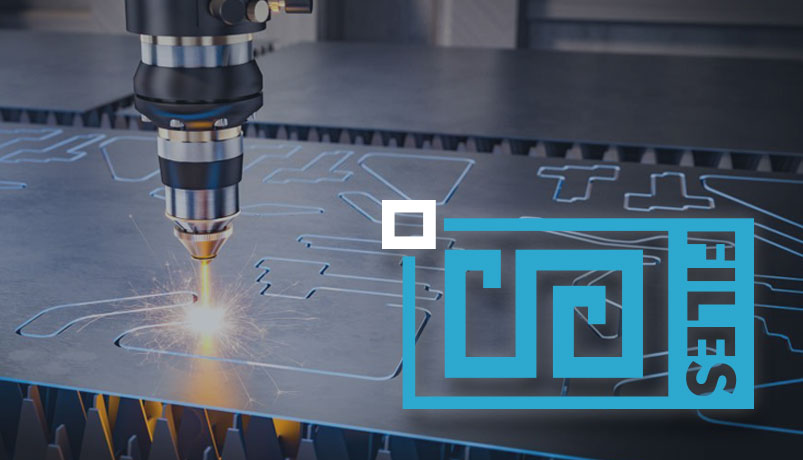CNC Arts
The Best Way to Cut Files for CNC Machines
Using a CNC machine to cut files can be a great way to get precise, clean cuts. However, it is important to know the best way to cut files for a CNC machine. Here are a few things to keep in mind when cutting files for a CNC machine :
The first thing to keep in mind is the bit diameter. The bit diameter will determine the size of the kerf, or the width of the cut. If the bit diameter is too small, the kerf will be too small and the cut will be weak. If the bit diameter is too large, the kerf will be too large and the cut will be messy.
The second thing to keep in mind is the speed at which the bit is moving. The faster the bit is moving, the hotter it will get. This can cause the material to deform.
The third thing to keep in mind is the depth of the cut. The depth of the cut will determine how much material is removed with each pass. If the depth of the cut is too shallow, the material will not be cut all the way through. If the depth of the cut is too deep, the material will be cut too deeply and the cut will
The best ways to cut files for CNC machines
There are a few things to consider when cutting files for CNC machines. The type of machine, the type of file, and the project all affect the best way to cut the file.
CNC machines can be either routers or milling machines. Routers are typically used for woodworking projects, while milling machines are better suited for metal projects. The type of file also affects the best way to cut it. Vector files are usually best for CNC routers, while raster files are better for milling machines.
The project also affects the best way to cut the file. If the project is simple, like cutting out a shape or engraving a design, a vector file will probably suffice. But if the project is more complicated, like creating a three-dimensional model, a raster file will be better.
The best way to cut a file for a CNC machine depends on the machine, the file, and the project. Consider all three factors before cutting a file for a CNC machine.
The benefits of using CNC machines
There are plenty of benefits to using CNC machines, but here are just a few :
CNC machines are incredible accurate. So accurate, in fact, that they can create parts and products with a very fine level of detail. This is why CNC machines are often used in the aerospace and medical industries where precision is key.
CNC machines are also very efficient and can produce large numbers of parts quickly and with minimal waste. This means that businesses can keep their production costs down and their profits up.
CNC machines are also very versatile. They can be used to create parts from a variety of materials including metals, plastics, and composites. This versatility means that businesses can use CNC machines to create a wide range of products.
Overall, CNC machines offer businesses a number of advantages which is why they are becoming increasingly popular.
The best methods for cutting files for CNC machines
There are many ways to cut files for CNC machines, but some methods are better than others. The best methods for cutting files are those that produce the most accurate and consistent results.
One of the best methods for cutting files is to use CAM software. CAM software is designed to generate code that can be used to control a CNC machine. This code can be used to produce very accurate and consistent results.
Another great method for cutting files is to use a laser cutter. Laser cutters are very precise and can produce very accurate and consistent results.
The best method for cutting files will depend on the specific application. If accuracy and consistency are important, then CAM software or a laser cutter should be used.
The best software programs for cutting files for CNC machines
There are a few great software programs that can be used for cut files for CNC machines. One great option is Fusion 360 by Autodesk. Not only does it offer parametric and direct modeling, but it also has CAM capabilities built in. This means that you can generate G-code directly from the software, making it a great all-in-one solution for CNC machining.
Another great option for software is CAMWorks. This software is specifically designed for CNC machining and offers a variety of advanced features and options for users. It is a great choice for those who are looking for powerful software with a lot of features.
Another great budget option is Mach3 by ArtSoft. It offers 2.5 and 3 axis machining, and can also generate G-code.
No matter what your budget is, there is a great software program out there that can be used for cut files for CNC machines. It is important to do your research and find the one that best suits your needs.
The best materials for cutting files for CNC machines
There are a few different things to consider when determining the best materials for cutting files for CNC machines.
The first is the type of material that the CNC machine will be cutting. There are many different types of materials that can be cut with a CNC machine, so it is important to choose a material that is compatible with the machine.
The second thing to consider is the thickness of the material. The thickness of the material will determine the size of the cutting bit that is needed.
The third thing to consider is the type of cutting that will be done. There are two types of cutting that can be done with a CNC machine, linear and circular. Linear cutting is when the cutting bit moves in a straight line, and circular cutting is when the cutting bit moves in a circle.
The fourth thing to consider is the speed of the CNC machine. The speed of the machine will determine how fast the material can be cut.
The fifth and final thing to consider is the price of the materials. Some materials are more expensive than others, so it is important to choose a material that is within the budget.
The best tips for cutting files for CNC machines
One of the best tips for cutting files for CNC machines is to use a CAM program. CAM programs allow you to input the specs of your material and the machine, and then they generate the g-code necessary to cut the file.
Another great tip is to use a smaller bit than you think you need. It’s better to make several shallow cuts than one deep cut, as it’s easier on the machine and produces less waste.
Finally, take your time when setting up the machine and make sure everything is level and secure before starting the cut. It’s better to take a few extra minutes to set up the job properly than to have to restart it because something went wrong.

